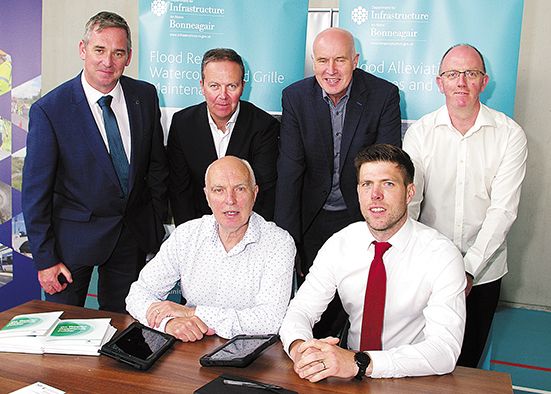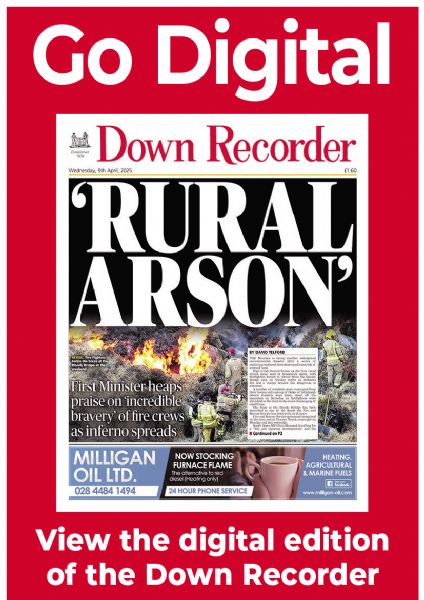Eight years to find solution
Eight years to find solution
3 July 2024

MEASURES to protect Downpatrick town centre from suffering a repeat of last November’s catastrophic flooding could take up to eight years to implement.
The news, which was revealed by a senior Department for Infrastructure official last week, has stunned local politicians and the business community.
They fear another wet autumn and winter could see flood water levels rise again and decimate the heart of the town centre which is still recovering from what happened seven months ago.
Down Leisure Centre was the venue last week for an event when the draft findings of a multi-agency probe into last year’s devastating flooding were revealed.
While it was hoped the event would have shed a light on the way forward, business owners, politicians and the Federation of Small Businesses (FSB) say they were left “underwhelmed” by what they heard.
They remain deeply frustrated that many months on from the event which cost millions of pounds in damage to properties and stock, they have not been told what infrastructure improvements could potentially be put in place to hold back floodwater.
While there was an opportunity to speak privately with Department of Infrastructure officials, there was no formal public question and answer session.
A specialist consultant provided an overview of what caused the flooding in Downpatrick and Newcastle during a 20-minute presentation, but there was no indication of what viable solutions could be put in place in Downpatrick to prevent future flooding.
The informal briefing revealed more than double the monthly amount of rain fell in one week and that had it not been for the Quoile barrier — which separates the Downpatrick river from Strangford Lough — the town centre flooding could have been worse.
The FSB’s Roger Pollen said he had been hoping to hear what would be done to prevent future flooding and described the publication of the draft findings as “something of a rear-view mirror exercise”.
He hopes those involved take the lack of enthusiasm away and come up with an action plan of how to deal with it.
Mr Pollen continued: “There are two parts of this - make sure this isn’t going to happen again and the other is to make financial restitution for what has happened and we are also underwhelmed with that.
“Money was made available last November and everyone was making the right noises but that has stalled in the last few months. Many businesses are still waiting for support to get back on their feet.”
It was suggested at the meeting that dredging the Downpatrick river would not impact on flood levels. Consultants say a key limitation to drainage is the average water level in Strangford Lough which fluctuates with tides and remains considerably higher than the Quoile riverbed.
Consultants say dredging the river would not improve flood levels as the river would simply refill with water, offering no benefit for Downpatrick’s drainage.
Within days of last week’s event it was revealed that independent consultants who carried a detailed examination of bridges at the Downpatrick and Co Down Railway reported major issues with silt.
Engineers reported a heavy silt build-up in the riverbed at both the Quoile and Plank Drain which made inspections difficult and impeded water flow.
They said “significant amounts” of silt were present at all bridges, making a full investigation difficult, with the silt build up one metre deep in both watercourses.
A Department for Infrastructure spokeswoman said a detailed feasibility report for Downpatrick was progressing.
“This work is considering if there are viable solutions which could be provided to mitigate the impacts of further flooding in the area. The report is due to be completed in spring 2025,” she added.
Newry, Mourne and Down Council has confirmed that under the Enhanced Flood Support Scheme, it has processed and issued Letters of Offer up to a combined total value in excess of £3m to those businesses who have met the criteria.
The council said it had already made payments in excess of £1m of support, with around £140,000 paid out under the hardship scheme set up to help the business community.


